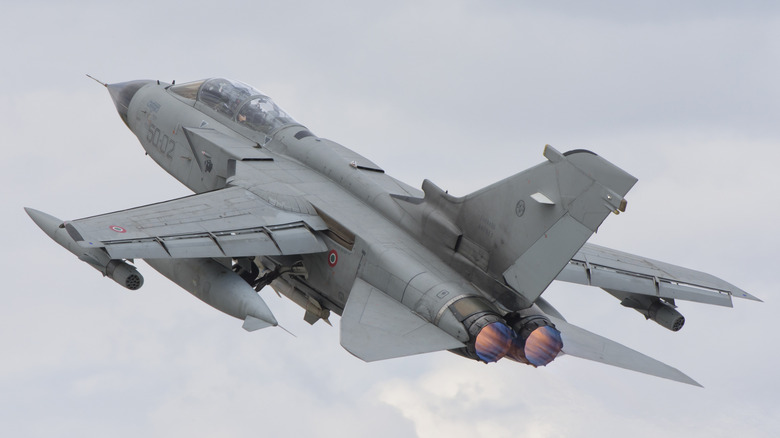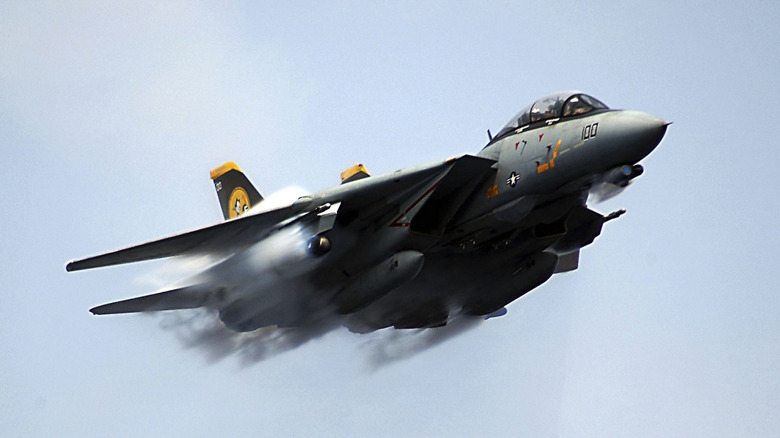What Are 'Swing Wing' Fighter Jets And Are They Still Made Today?
Due to changes in military strategy and technological breakthroughs, fighter jets are always evolving, with constant improvements made to radar, propulsion, and design. A notable feature developed for fighter jets was the swing wing, which allowed jets to adjust their wing configuration. The last fighter jet built with this feature was the Panavia Tornado. Modern aircraft no longer use the swing-wing. A swing-wing jet fighter is an aircraft with wings that can be adjusted in angle while in flight.
As a result of this capability, a pilot can modify the wing's sweepback angle to maximize the aircraft's performance under various flight conditions that can affect its agility and fuel consumption. One of the most well-known swing-wing fighter jets is the Grumman F-14 Tomcat, which the Navy tested extensively for all manner of scenarios, including an asymmetrical wing configuration. This was when one wing wouldn't fold back as intended. The purpose of the swing wing was to maximize the performance of the fighter jet, specifically when the aircraft flies at supersonic speeds.
The ability of the wing to be folded closer to its fuselage helps decrease aerodynamic drag, allowing it to reach and maintain speeds above Mach 1 while using less fuel. For high-speed operations, the wings are swept back, while for lower speeds like landing and takeoff, the wings are fully extended. Swept-wing fighter jets use a combination of hydraulic and mechanical systems that control actuators to move the wings.
Variable wing, adjustable performance
The concept of variable geometry wings dates back to WWII when German aircraft company Messerschmitt studied the variable sweep wing design for its prototype Messerschmitt P.1101. Further development on this wing design continued years later when the American company Bell launched its research aircraft, the X-5 in 1951, and was followed by Grumman's XF10F Jaguar prototype the following year. In 1967, the first operational swing-wing fighter was put into service with the General Dynamics F-111 Aardvark. Other countries followed suit, including France with its Dassault Mirage G, and the Soviets with the Sukhoi Su-17.
Modern aircraft have moved away from the variable swing-wing design, as most fighter jets now use swept-wing or delta-wing configurations. While not providing the same versatility, swept wings can minimize drag at high speeds, along with other performance advantages. Delta wings, on the other hand, create vortex lift, improve longitudinal stability, and decrease wave drag. Moreover, they can sustain lift at high angles of attack, improving an aircraft's maneuverability, and its shape allows it to have a large internal fuel volume while remaining relatively light.
Because of their weight, complexity, and the introduction of more sophisticated aerodynamic designs and flight control systems, swing-wing fighter jets became obsolete. Modern wing designs can achieve comparable or superior aerodynamic performance without its disadvantages. While no new swing-wing aircraft are being built, several aircraft of this design remain in service, including the MiG-23, MiG-27, and the venerable Rockwell B-1 Lancer of the United States Air Force.

